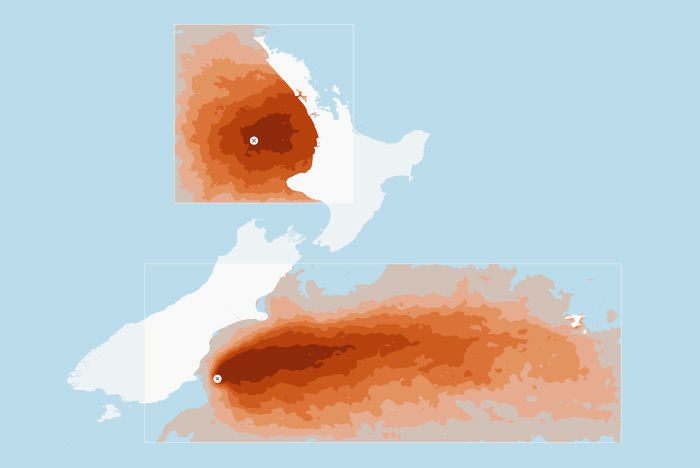
Loading map...
- 5%
- 20%
- 35%
- 50%
- 65%
- 80%
- 95%
- of 500 modelled oil spills | read more in The Science
- Drill Site
- Model Boundary

Drilling rights in the ocean surrounding New Zealand are being
sold off to big oil companies.
We are sorry this interactive map is not available for small devices. Please make sure to visit this web site on a tablet or personal computer for the full experience.